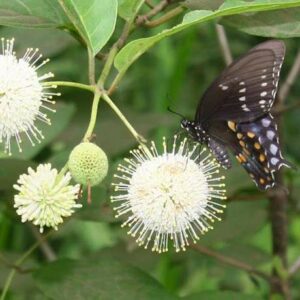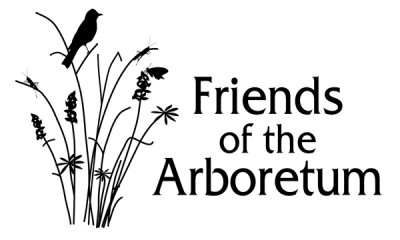
COMMON NAME: Buttonbush
SCIENTIFIC NAME: Cephalanthus occidentalis – Cephalanthus is derived from the
Greek, meaning “a head of flowers” and occidentalis means “western” which here
refers to the western hemisphere.
FLOWER COLOR: White
BLOOMING PERIOD: late July, early August
SIZE: a broad shrub 6 to 8 feet tall and 4 to 8 feet wide.
BEHAVIOR: Rangy, unrefined. Leaves emerge late in May.
SITE REQUIREMENTS: Grows naturally in a variety of wet sites including marshes
and wooded flood plains. Full sun is best for flowering, but will tolerate light shade.
Not fussy about soil type as long as it is rich or moist. Does not tolerate dryness.
NATURAL RANGE: New England and adjacent Canada, south to Florida and west to
southern Minnesota. In the south the range extends to New Mexico. This plant also
occurs in Cuba, Mexico, and eastern Asia. In Wisconsin it is found in floodplain
forests and marshes along major rivers in the southwestern part of the state.
SPECIAL FEATURES: Unusual round cluster of flowers in mid-summer. Round fruit
cluster goes through a reddish stage before ripening to brown. The glossy foliage is
attractive. The plant belongs to the coffee family.
SUGGESTED CARE: Water new plantings during the first growing season and
protect from browsers.
COMPANION PLANTS: In marshes it is found with marsh milkweed, bluejoint grass,
tussock sedge, marsh fern, common boneset, wild iris and cattail. In wooded flood
plains it occurs with green dragon, wahoo, white ash, moonseed, and American elm.
Elsewhere with winterberry, royal fern, marsh cinquefoil, red maple, speckled alder,
and red osier dogwood.
608-890-2555
staff@foamadison.org
